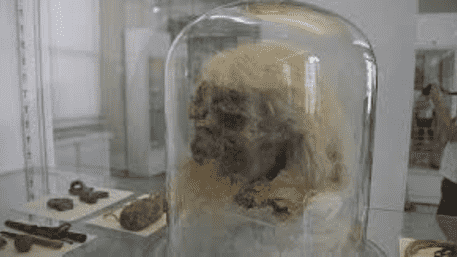An ancient salt mine in Iran has revealed a grisly yet fascinating historical find: the remarkably preserved remains of miners who lived thousands of years ago. Known as the “Saltmen,” these corpses were naturally mummified by the salt in the Chehrabad salt mine, located near the village of Manzelou in northwest Iran. The oldest remains date back to around 9550 BCE, making them over 10,000 years old.
Discovery and Preservation
The first of the Saltmen, discovered in 1993, was a man with a long white beard and a gold earring, accompanied by iron knives. His body, which had been buried in the middle of a 148-foot tunnel, was found wearing one leather boot and remnants of woollen trousers. This individual is believed to have died around 300 CE.
The second Saltman was unearthed in 2004, approximately 50 feet from the location of the first discovery. In subsequent years, two additional mummies, including a 16-year-old boy, were found in another tunnel, bringing the total number of identified corpses to six by 2010. These bodies were exceptionally well-preserved due to the salt and the lack of oxygen, which prevented decomposition.
Insights from the Remains
Examinations of the first Saltman revealed fractures around his eye and head injuries, suggesting he may have died during a mining collapse. The 16-year-old was discovered with his hands raised above his face, possibly indicating a sudden fall or surprise.
The fifth Saltman, better preserved than the others, provided crucial insights into the health of these ancient miners. Analysis of his remains showed the presence of tapeworm eggs, indicating that he and his contemporaries likely consumed raw or undercooked meat. This finding represents the earliest evidence of intestinal parasites in ancient Iran, as documented in a 2012 study published in the Journal of Parasitology.
Unresolved Mysteries and Ongoing Research
While six complete bodies have been found, detached body parts suggest there may be as many as eight or more Saltmen in the mine. The exact causes of their deaths, as well as the potential number of additional remains, remain subjects of ongoing research and investigation. The Saltmen continue to offer valuable insights into the lives and deaths of ancient miners, with each discovery adding to the rich tapestry of historical knowledge.







